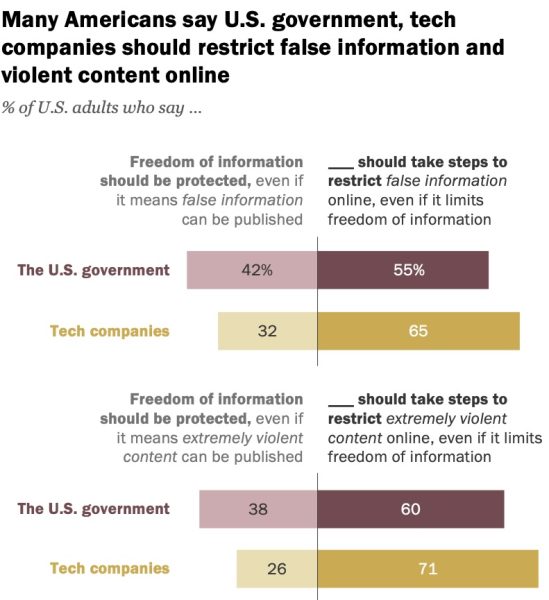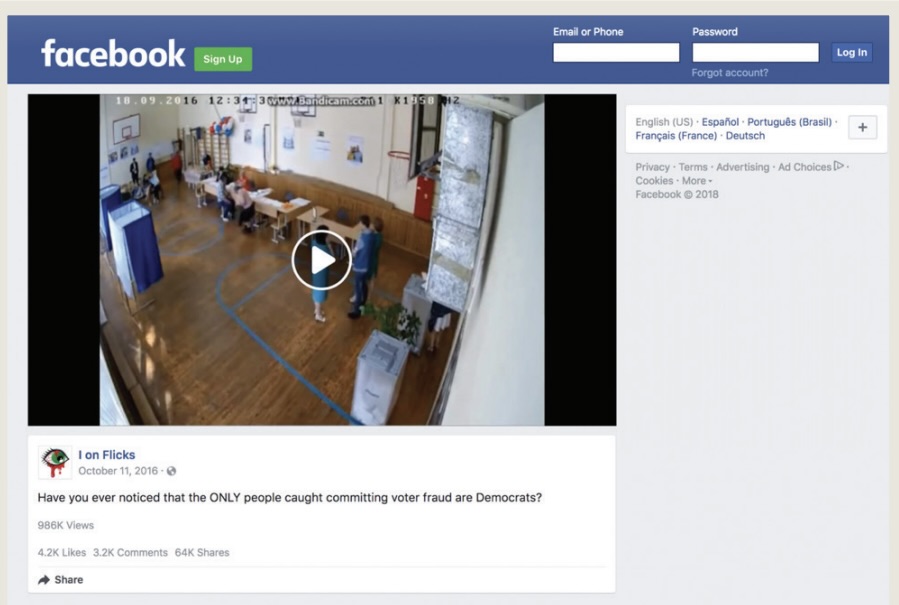Social media has hijacked politics, yet America remains blindly glued to the screen.
Today, many social media sites such as Facebook and X have become major sources of conspiracy theories and false information—especially regarding politics in the United States. As a result, online content contains significant amounts of inaccurate news.
“There’s a lack of facts [on social media],“ says Achintya Srinivasan, a 10th-grade student at Wilton High School. “I see more fake material attacking candidates instead of informative content when browsing social media.”
Srinivasan’s experiences resonate with many. Results from a 2016 survey conducted by the Pew Research Center found that 32% of Americans often see made-up political news online. Social media’s design to push viral content regardless of reliability exacerbates the impact of misinformation.
According to the New York Times, a 2022 study found that watching trending videos covering uncertainty about elections on TikTok trains the platform’s algorithm to display misinformation and far-right ideologies to generate user engagement. Similarly, researchers from New York University also discovered in a 2022 analysis that YouTube’s recommendation algorithm amplified suggestions for conspiracy videos concerning the 2020 presidential election to already skeptical users.
James Bisbee, the main writer of the research study and a current political science professor at Vanderbilt University, pointed out that “The people most likely to believe these narratives were being suggested more content about them.”
These findings demonstrate how social media undermines the impartial nature of news outlets and creates online echo chambers—digital spaces where users receive suggestions for content that only reinforces their beliefs. Consequently, due to echo chambers, online platforms spread increasingly polarizing stories containing false narratives that leave out key viewpoints and important facts.
Research also shows that young adults fall victim to online misinformation and struggle to discern facts from false narratives and stories. In a study conducted by Stanford University from 2018 to 2019 involving high school students, 52% of participants concluded that a Facebook video demonstrated evidence of election fraud in the 2016 Democratic primary.
The video was not even from America.
Only three out of over 3,400 students identified the video’s origin in Russia through research.
Throughout the study, a staggering majority of participants also received the lowest scores on their responses to questions on the reliability of various online sources, revealing a large issue around the lack of social media literacy.
These trends highlight a growing need for effective solutions to combat misinformation. In a time when social media drastically shapes the information we see and hear, increasing comprehensive digital literacy programs in schools stands as a crucial step.
According to Fresno Pacific University, media literacy develops critical thinking skills applicable in many areas. Through media literacy lessons, students can learn to properly identify reliable sources while avoiding false narratives.
Social media companies must additionally address the challenge of misinformation as well. While platforms such as X have already created features including labeling misleading tweets, they must take more action to reduce misinformation.
In recent years, experts have proposed various solutions. For instance, one Washington Post article highlights Boston University Professor Marshall Van Alstyne’s proposal to reduce the outreach of fake news outlets by removing followers and delaying misleading posts.
In addition, Laura I. Gómez, founder of advocate group Project Include, continues to push for stricter policies that will remove and suspend accounts after misinformation violations. Implementing such strategies will help mitigate the impact of misinformation by improving control of the spread of false narratives.
To effectively combat political conspiracies and rumors, the US government must also play an important role. Taking firm legal action against social media platforms will help reduce misleading information while holding companies accountable.
Currently, leaders in Europe have taken decisive action to regulate social media apps. A Columbia Journal of Transnational Law publication states that Europe’s policies on internet platforms “[prepare] it to better combat disinformation spread on social media” by imposing penalties and fines of up to 10% of global revenue on social media companies that violate guidelines. The US government should integrate similar rules in its effort to address misinformation.
Despite evidence demonstrating the effectiveness of these measures in tackling online misinformation, some argue these policies will suppress opinions while failing to prevent misinformation from spreading.
“They shouldn’t limit political material at all…free speech benefits politics,” says Leo Kulon, another 10th-grade student at Wilton High School.

Many individuals also hold similar views. About one in three American adults still support social media companies protecting freedoms of speech and information instead of filtering inaccurate content according to a 2023 Pew Research survey. Critics in a Scientific American article also argue that people with higher levels of digital literacy training still have an equal likelihood of sharing false articles as people with lower levels of training.
However, the need for action against misinformation remains clear. While free speech certainly holds importance, we cannot tolerate misinformation on social media for the sake of protecting it. We must take decisive action to maintain the integrity of online news sources and restrict misinformation.
From the January 6, 2021 insurrection to assassination attempts on President-elect Donald Trump, fake news and conspiracy theories shared through social media have continued to incite political violence, writes Richard Forno, a lecturer at the University of Maryland. Furthermore, a Boston University research article states that misinformation regarding COVID-19 vaccinations cost the American economy $50 million to $300 million daily during the pandemic, illustrating just how much damage false information can cause.
Research has also shown positive results from integrating media literacy in more schools. One study in a Sage Publications article found high school students’ abilities to evaluate online information significantly improved when they participated in media reasoning lessons. After taking just six classes, participants’ average digital literacy test scores increased by 76% compared to the average score before the program.
While media literacy programs may not entirely prevent users from sharing false stories, integrating more educational programs will provide essential resources for teaching individuals how to recognize misinformation and safely navigate online sources.
Social media’s impact on American democracy demands comprehensive strategies to combat the spread of misinformation. Increasing media literacy in schools serves as a key step for empowering students with skills to evaluate information and discern misleading content. Social media companies must also adopt more thorough measures against fake news accounts to limit the reach of misinformation.
The US government holds a vital role in fighting online misinformation. Passing more legislative action to enhance regulations will hold platforms accountable by establishing clear guidelines and consequences for circulating misleading content and narratives.
Ultimately, more collective action between educators, social media companies, and lawmakers to address online misinformation will steer society to a safer and more trustworthy online environment while fostering meaningful civil discourse.
We must act now.

